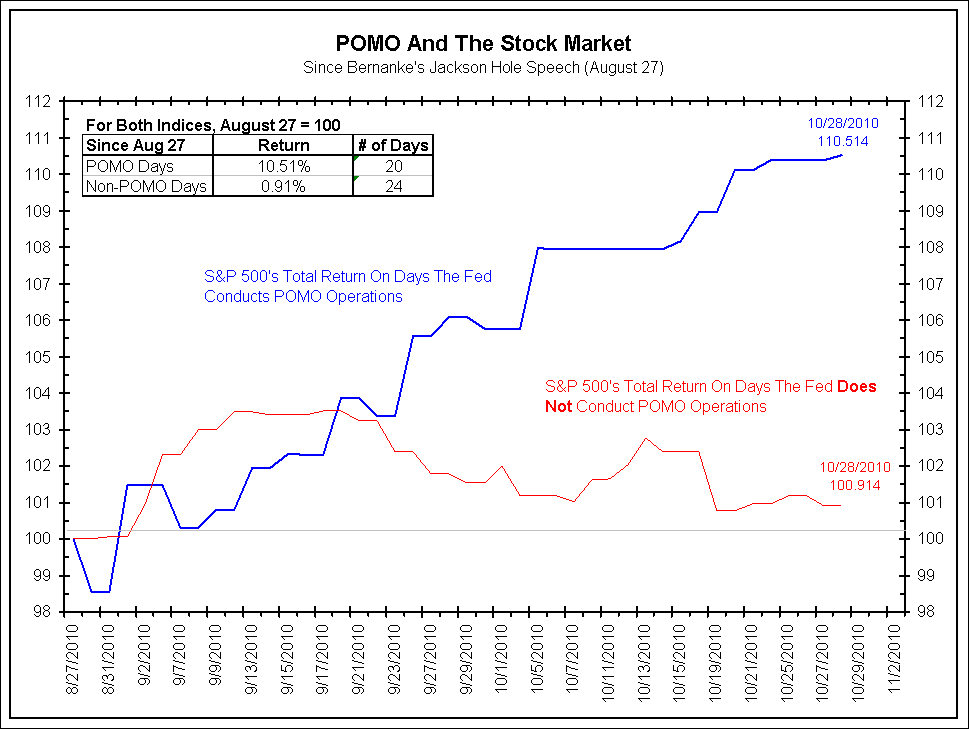Earlier this month we noted the stock market gains that occur on days the Federal Reserve conducts Permanent Open Market Operations or “POMO”. Let us update these findings.
The table and chart below continues to confirm what Goldman said on October 22. In our version we start on August 27, the day of Bernanke’s Jackson Hole speech which opened the door to what is now known as QE2.
• Since August 27, the Federal Reserve bought Treasuries via POMO on 20 different days. Cumulatively the S&P 500 was up 10.51% during these days on a total return basis.
• Conversely, since August 27 there have been 24 different days in which the Federal Reserve did not conduct POMO. Cumulatively the S&P 500′s total return during these days was 0.91%.
>
The next table and chart shows the same exercise for the 10-year Treasury’s total return.
• Since August 27, the Federal Reserve bought Treasuries via POMO on 20 different days. Cumulatively the 10-year Treasury’s total return was 1.03% during these days.
• Conversely, since August 27 the Federal Reserve has not conducted POMO on 24 different days. Cumulatively the 10-year Treasury’s total return was -0.68% during these days.
>
POMO seems to affect the stock market moreso than the Treasury market. At first blush this may seem very odd as the Federal Reserve is buying Treasuries, not stocks. Let us summarize what we said in our conference call earlier this month (pages 8 to 11):
The Federal Reserve believes in the portfolio balance theory. This means it does not matter what they buy with newly printed money (QE2). The market will arbitrage this new money into the market that it thinks it will have the most impact. So do not get hung up on what the Federal Reserve is buying, but rather think about where these new dollars matter the most.
Right now the markets think that newly printed dollars will benfit “risk on” markets like stocks. So, Treasury purchases are a conduit to the “risk on” markets. Treasuries will still respond to the ups and downs of the economy like they always do. Stocks, on the other hand, respond to the perceptions of newly printed dollars from the Federal Reserve and other larger macro themes (like fear or relief of a double dip recession) than the more traditional fundamentals.
-Jim Bianco




What's been said:
Discussions found on the web: